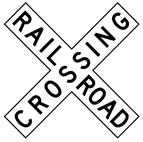The Trans-Siberian Mainline
Siberia is a vast expanse of land that stretches across Russia from the Ural Mountains in the west to the Pacific Ocean in the east. In the 19th century Siberia [to be] Russia's frontier —thinly populated, largely unexplored, yet possessing vast economic potential. Settlement in the region [to remain] sparse until the building of the unique Trans-Siberian Railroad, which [to connect] the European part of the country with the Pacific Coast and [to make] large-scale immigration possible. According to Minister of Railways S.Witte: "The Great Siberian Railway [to breathe] new life into boundless Siberian lands." The history of railway construction in Russia [to start] at the end of the 19th century. Railway mainlines were laid down from the Western borders of the country to St. Petersburg and Moscow, from the center to the Volga region and from the Urals to Central Asia. In 1892 the railway network in Russia [to have] a total length of 32,000 km. The Samara-Zlatoust railway was built and later it [to become] a liaison between railways in the European part of Russia and the Trans-Siberian Mainline. On March 15, 1891 Alexander III [to issue] an imperial prescript addressed to future Emperor Nicholay II which [to state]: "I command to start constructing a railway across all Siberia to connect the Siberian region with the European part of Russia. I also entrust you with ground-breaking of the Great Siberian Track in Vladivostok." Two projects of the future mainline were proposed - "the southern version" and "the northern version". "The northern version" suggested by the Minister of Railways K.N. Posyet [to win]. According to his project the railway [to be] shorter by 400 km and was passing by the Siberian high road and populated areas. The building of the Great Siberian Track [to begin] in 1893. Work [to start] at the same time from both the eastern and western terminals. The plan originally [to call] for an all-Russian road, but a treaty with China in 1896 [to enable] the Russians to construct an 800-mile (1,300-kilometer) line through Manchuria, thus shortening the distance to Vladivostok. After Manchuria [to pass] to Japanese hands following the Russian-Japanese War of 1904-05, the Russians [to proceed] with a longer railway entirely on their own territory. Construction rates [to be] very fast despite the fact that the railroad [to go] through swamps, thick taiga, [to cross] major rivers and huge mountains. One of the main obstacles to completion of the line [to be] Lake Baikal, where there [to be] ferry service. A loop around the lakeshore [to complete] in 1905. By 1916 the Amur River line north of the Chinese border [to finish], and there [to be] a continuous railway on Russian land from Moscow across Siberia. In less than 25 years more than 8,600 km of track [to lay down]. The building of the gigantic mainline [to be] a heroic deed accomplished by Russian construction workers thanks to their tenacious efforts and courage. At first 10,000 workers [to take part] in the construction. Later, their number [to go up] to 100,000. Some of Trans-Siberian stations bear their names - Rukhlovo, Vyazemskaya, Baranovsky, Snarsky, Adrinovka, etc. Exercise 6. Render the text ‘The Trans-Siberian Mainline’ in 12-14 sentences. WEB-QUEST
Create a timeline comparing Russian, US and Canadian railroad history. The sites which help you: http://www.geographia.com/russia/trasib01.htm http://en.wikipedia.org/wiki/History_of_rail_transport
Unit 12. safety requirements in maintenance documentation Start up Exercise 1. Warning signs can indicate any potential hazard, obstacle or condition requiring special attention. Look at the pictures and say what instructions these signs give. When we give instructions, we use the infinitive of the verb. To give a warning or prohibit an action we use do not. Example: A. Do not touch! The object is under high voltage.
|







